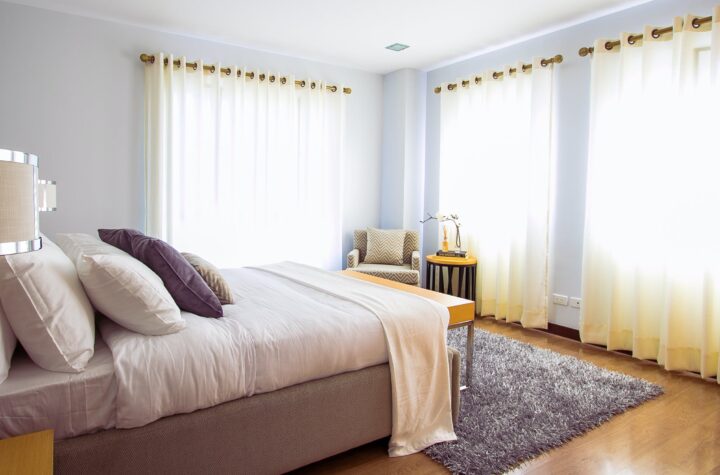The following contribution is from another author.
Creating a healthy bedroom environment is essential for good sleep, relaxation, and overall well-being. Your bedroom should be a sanctuary where stress is left at the door, and tranquility reigns. Here are 10 actionable tips to transform your bedroom into a healthful retreat.
1. Prioritize Air Quality
Fresh air is crucial for a healthy bedroom. Consider using an air purifier to remove pollutants and allergens, and keep windows open when the weather permits to ensure a steady flow of fresh air. Indoor plants can also improve air quality by absorbing toxins and producing oxygen.
2. Choose the Right Mattress and Pillows
Your mattress and pillows play a significant role in supporting a restful night’s sleep. Opt for hypoallergenic materials to prevent allergic reactions, and choose a mattress and pillows that support your body’s natural alignment. Remember, comfort is key to a rejuvenating sleep.
3. Consider Ergonomic Convenience
The height of your nightstand can impact your comfort and the functionality of your bedroom. A nightstand that aligns with the height of your mattress allows for easy access to your essentials without straining. To find the optimal nightstand height, consider your bed frame design and bedroom layout.
4. Limit Electronic Devices
Electronic devices emit blue light, which can disrupt your sleep cycle. Try to limit the use of phones, tablets, and computers in the bedroom. If you must use them, consider blue light filters or glasses to minimize exposure before bedtime.
5. Embrace Soft Lighting
Harsh lighting can hinder your ability to relax. Opt for soft, warm lights in your bedroom to create a calming atmosphere. Dimmer switches can offer flexibility, allowing you to adjust the lighting to suit your mood and time of day.
6. Incorporate Calming Colors
The color of your bedroom walls and decor can significantly affect your mood. Soft, soothing colors like blues, greens, and light neutrals can create a tranquil space that promotes relaxation and sleep.
7. Keep It Clutter-Free
A cluttered bedroom can lead to a cluttered mind and hamper sleep. Regularly declutter your space to maintain a sense of calm. Storage solutions like under-bed containers and closet organizers can help keep your bedroom tidy and serene.
8. Buy Quality Bedding
Your bedding can affect your sleep quality. Choose breathable, natural fabrics like cotton or linen to keep you comfortable throughout the night. Regularly wash your bedding in hot water to eliminate dust mites and allergens.
9. Invest in a White Noise Machine
One of the best ways to design your bedroom for better sleep is to purchase a white noise machine. This nifty gadget can mask disruptive sounds and create a consistent auditory backdrop, making it easier to fall and stay asleep. It’s an effective tool for those who live in noisy environments or are particularly sensitive to sound during the night.
10. Practice a Pre-Sleep Routine
Developing a pre-sleep routine can signal your body that it’s time to wind down. This might include reading, meditating, or gentle stretching. Consistency is key to reinforcing your body’s sleep-wake cycle.
Creating a Sanctuary for Sleep
Transforming your bedroom into a healthful haven doesn’t have to be complicated. By implementing these tips, you can create a space that promotes relaxation, well-being, and restorative sleep.
Remember, your bedroom is your retreat—a place where the stresses of the day melt away and rejuvenation begins. Start with one change at a time, and soon, you’ll find your sleep and overall health improving.
















